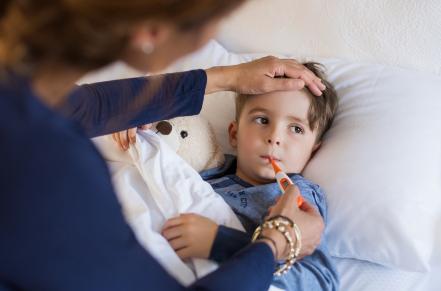What Is It?
Impetigo is a very common and mild skin infection caused by streptococcal or staphylococcal bacteria.
What Are the Symptoms?
Impetigo appears as a blistery rash. When the blisters open, they produce a thick, golden-yellow discharge that dries, crusts and sticks to the skin. It may start as oozing at an injured spot on the skin (such as an insect bite, cut, or burn) and can easily be spread by the person’s hands to other areas of the skin. Children often have impetigo on their faces. Impetigo is most commonly seen in the warm summer months.
Who Gets It and How?
Impetigo is spread from person to person through direct contact with the discharge from the lesions. Most children have impetigo at least a few times. Impetigo bacteria are found all over infected skin, on the crusts and in the discharge They can be spread to another person who directly touches the skin or a surface contaminated by the discharge or crusts. This infection can rapidly spread among persons in close contact, such as children in a child care facility.
Usually the skin protects the body from bacteria. When the skin is broken (cut, scraped, bitten or scratched), bacteria can get under the surface, multiply and cause an infection. Children often have multiple cuts and scrapes on their bodies which make them more vulnerable to impetigo than adults. In most cases, impetigo is treated with some combination of special soap and an antibiotic ointment. An oral antibiotic is given with more extensive impetigo.
When Should People with this Illness Be Excluded?
Exclude the child from the center until 24 hours after treatment has begun and the child no longer has a discharge.
Children and staff do not need to be sent home in the middle of the day if a suspected impetigo rash is noticed. Wash a child’s rash area with soap and water and cover it. Wash your hands and the child’s afterwards. Notify the parents when they come to pick up the child and tell them that the child should be seen by a health care provider.
How Can I Limit the Spread of Impetigo?
If a child in your facility has impetigo:
- Make sure that all children and adults practice good hand washing technique.
- Exclude the child from the center until 24 hours after treatment has begun and the child no longer has a discharge.
- Infected areas should be washed with mild soap and running water.
- Wash the infected child’s clothes, linens and towels at least once a day and never share them with other children.
- Wear gloves while applying any antibiotic ointment that a physician may recommend and wash your hands afterwards. Antibiotics taken by mouth may also be prescribed.
- Make sure to follow policies on cleaning and disinfecting toys.
| English | Spanish |
|---|---|
| Impetigo (pdf; 188.24 KB) | Impétigo (pdf; 186.27 KB) |







